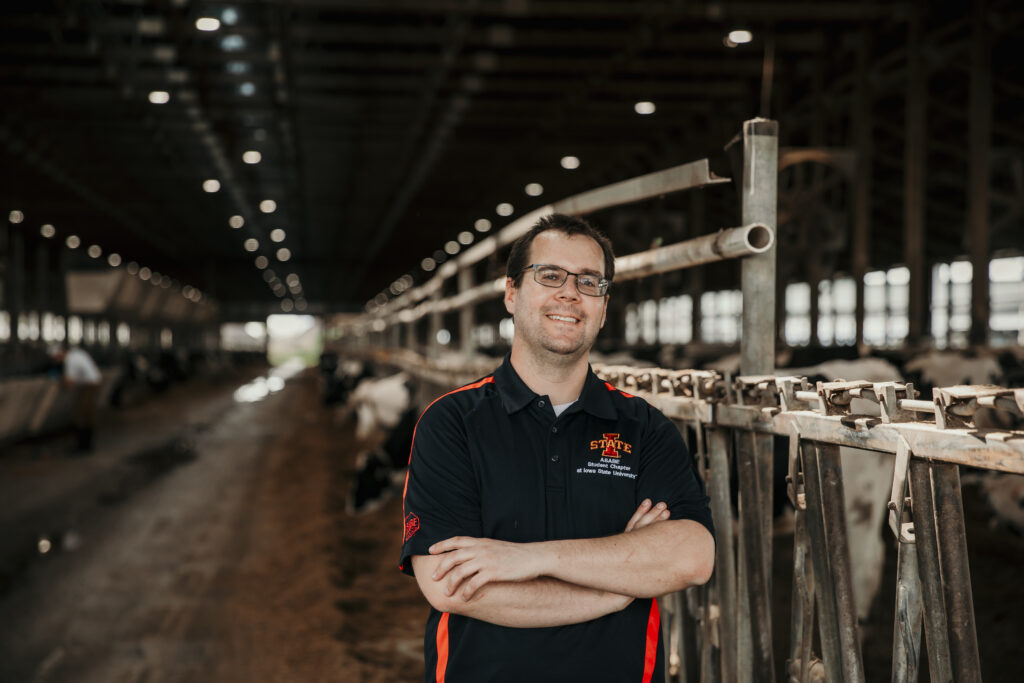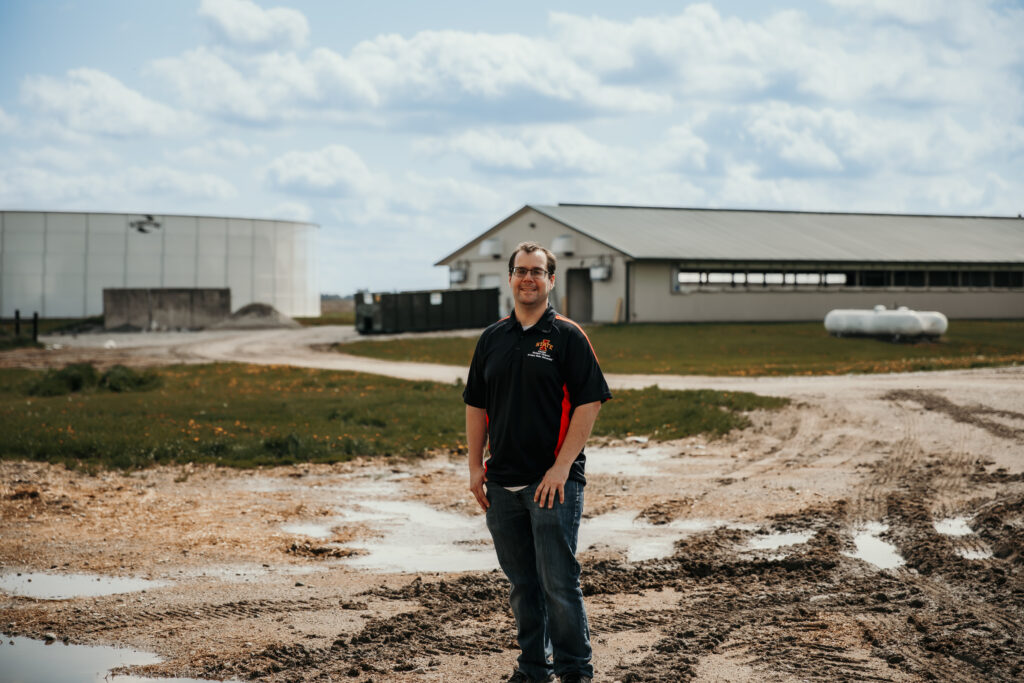Dr. Manure: Filling fields at the forefront of environmental awareness
Author: Sarah Hays
Author: Sarah Hays

Not all of us spend a lot of time talking about it – that is, until we smell it.
But for Dr. Manure, it’s a different story. Dan Andersen, also known as Dr. Manure, is an associate professor in the Department of Agricultural and Biosystems Engineering that’s pretty much the expert to go to on the topic of manure.
Andersen studies all things manure – especially here in Iowa. And all of his work with manure boils down to one common goal: creating more sustainable farming practices through recycling nutrients.
Farm fields can use many different types of fertilizer – and manure is a big one. Mass production of manure in Iowa covers 20-30 percent of those acres using manure as fertilizer. That percentage equates to about 16-18 billion gallons of liquid manure every year.
“In Iowa, almost all manure will be utilized as a fertilizer source. With all the manure we have in the state, we can supply roughly 20-30% of all our crop acres with the nitrogen, phosphorus and potassium they need,” Andersen said.

Manure is a unique fertilizer that contains essential nutrients for crops to grow – like nitrogen and phosphorus. From cows to chickens to pigs, there are many different types of manure that each have their own unique characteristics and relationship with nutrient density and absorption. And Dr. Manure doesn’t play favorites.
“I like all manure,” Andersen said. “All different manures are pretty great. Dairy, swine and poultry are the big three here in Iowa.”
But Andersen does have a soft spot for swine manure due to its concentrated style. “Swine manure has around 60 pounds of nitrogen per thousand gallons,” he says. The concentration allows swine manure to be more cost efficient to use than some commercial fertilizers.
Dairy manure, on the other hand, is less intense and more diluted. But that just means there’s room for experimentation – like solid separation and playing around with application rates.
“With dairy manure, there is more opportunity for experimentation,” Andersen said. “We might try things like solid separation. Or we might deal with relatively high rates of application, 15-20,000 gallons per acre. That presents some challenges to overcome – how do we make a big enough crater to hold all of that liquid in the field to make sure it will be there when our crops need it?”
Poultry manure is a big deal in Iowa too, thanks to the egg industry. “The only hitch is losing nitrogen and ammonia during storage,” Dr. Andersen admits. But they’ve got smart new production systems to handle that.
When it comes to covering the fields with manure, Dr. Manure gets technical. “For liquid manure, we’re talking 2-4,000 gallons per acre,” he says. That’s like an eighth of an inch thick. But don’t picture manure just lying on the surface – it’s usually injected into the ground in various ways.
While we don’t hear a lot about it, manure is big business, too. Andersen tells us, “Each gallon of manure costs about a penny and a half to get applied.” That puts the manure industry in Iowa at about 500 million dollars annually.
Dr. Manure has big dreams to go along with the large manure industry, like recycling all that nitrogen. Right now, they’re only about 50-60 percent efficient at getting it into crops. “How do we get closer to 100?” he wonders.
To tackle this, Andersen has been experimenting with anaerobic digestion, a way to turn manure into methane and reduce livestock facilities’ carbon footprint. He’s on a mission to make manure a top-notch resource, with an eco-friendly twist.
“I want my legacy to be making sure we continue to value manure as a resource in this state while improving our environmental awareness.” Dr. Manure is all about making manure the best it can be. “Manure is a critical component in solving issues like water quality and carbon footprints. We get to be at the forefront of that.”